Introduction
Viltrox has recently released a couple of small, lightweight lenses in its AIR series, both for full-frame and APS-C cameras. These lenses have generally offered strong optical performance with impressive sharpness at affordable prices. Now, Viltrox has added a wide-angle 15mm lens for APS-C sensors to the series (22.5mm equivalent). This lens is also very lightweight, and at $239, it can still be considered budget-friendly. For the first five days after launch, it comes with a 5% discount — and using the affiliate links provides an additional 5% off*. But is it any good? Let’s find out!
![]() I tested this lens on a Nikon Zfc.
I tested this lens on a Nikon Zfc.
 You can see this review as a YouTube video here!
You can see this review as a YouTube video here!
![]() Sample images in high resolution here.
Sample images in high resolution here.
Sample Images






The Pink Series







Most of the sample images in this review and many more can be found in higher resolution here.
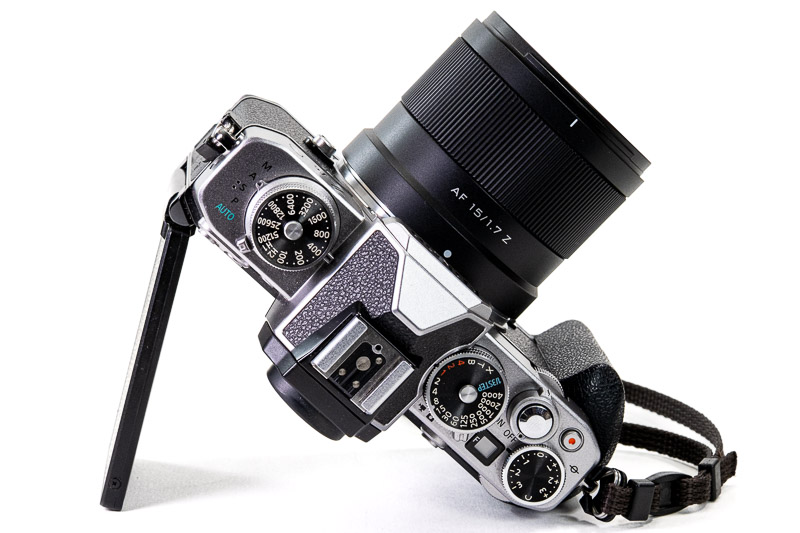
Specifications
| Focal Length | 15mm |
| Angle of View | 84.9° |
| # of Aperture Blades | 9 |
| Max Aperture | F/1.7 |
| Min Aperture | F/16 |
| Min Focus Distance | 0.23 m |
| Filter Size | 58mm |
| Lens Mount | E, RF, Z, X |
| Weight | 195 g |
| Size (D x L) | 68 x 58.5 mm |
| Elements/Group | 12/10 |
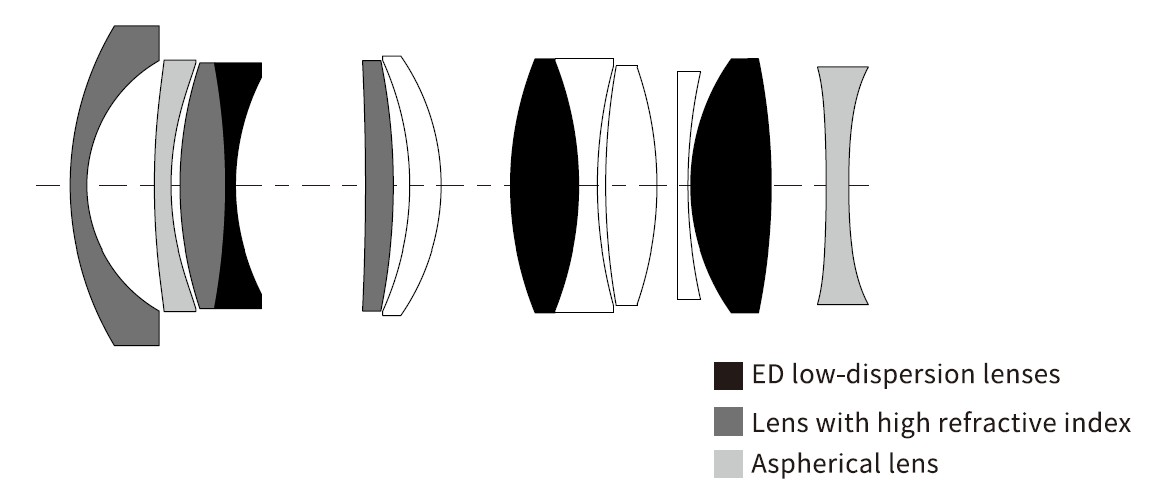
| Buy new: VILTROX Store, Pergear store, Amazon (anywhere) for $227-$239 (Affiliate links) * Only Viltrox store link includes the discount, but check all links for the best price! |
Disclosure
Viltrox kindly provided this lens for test and review purposes.
Handling and Build Quality
As the name suggests, the Viltrox AF 15mm f/1.7 Air is an autofocus lens. There’s no image stabilisation built into the lens, though that’s hardly necessary at this equivalent focal length of 22.5mm. Despite being part of the budget-friendly Air series — known for its compact and lightweight design — the build quality doesn’t feel cheap. It is, however, slightly larger than the other lenses in the Air series.
Electronic contacts on the mount allow communication with the camera, and a USB-C port on the metal mount enables firmware updates.

The lens is made of hard plastic, though the mount itself is metal. The design is minimalist, featuring only one control point: a relatively large focusing ring. This ring normally controls manual focus, but it can also be customised to adjust either the aperture or exposure compensation — and it operates clicklessly.
The focusing mechanism is internal, so the lens does not change length, and the front element does not rotate during focusing. Autofocus is driven by a stepping motor (STM).
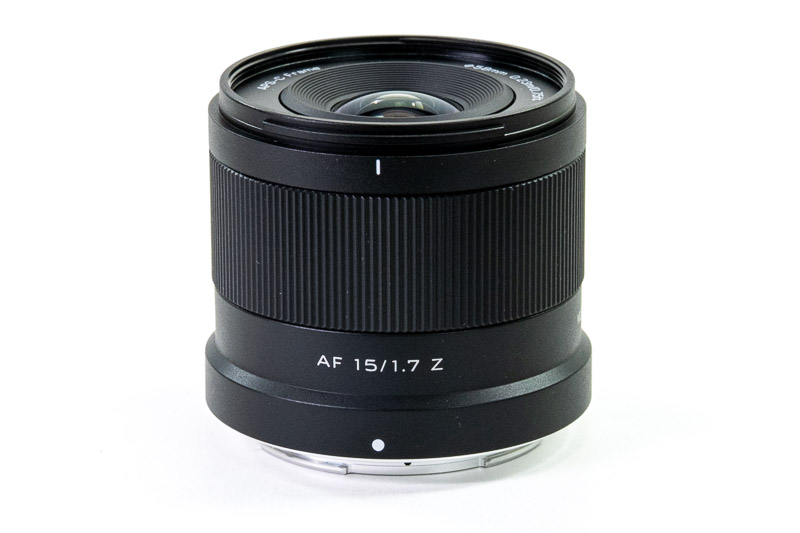
The lens lacks environmental sealing. It comes with a sturdy plastic lens hood with a matte interior to reduce reflections, but it is so tiny, I wonder if it’s of any help. The hood can be reversed for compact storage. In addition to front and rear caps, the package includes a cloth pouch.
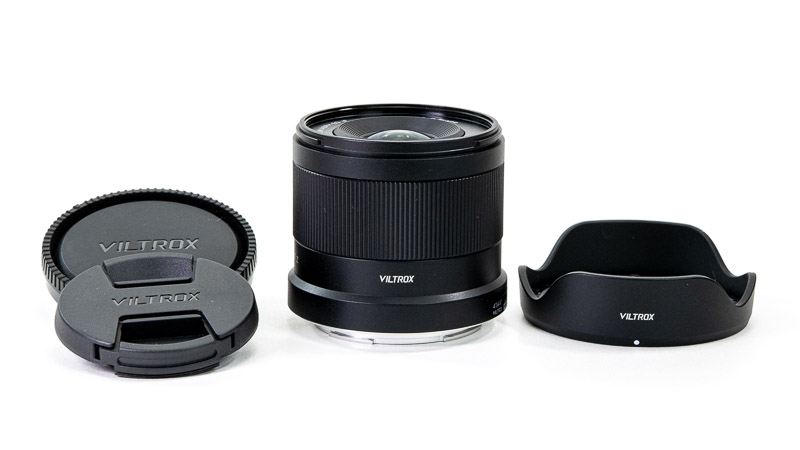
Optical Features
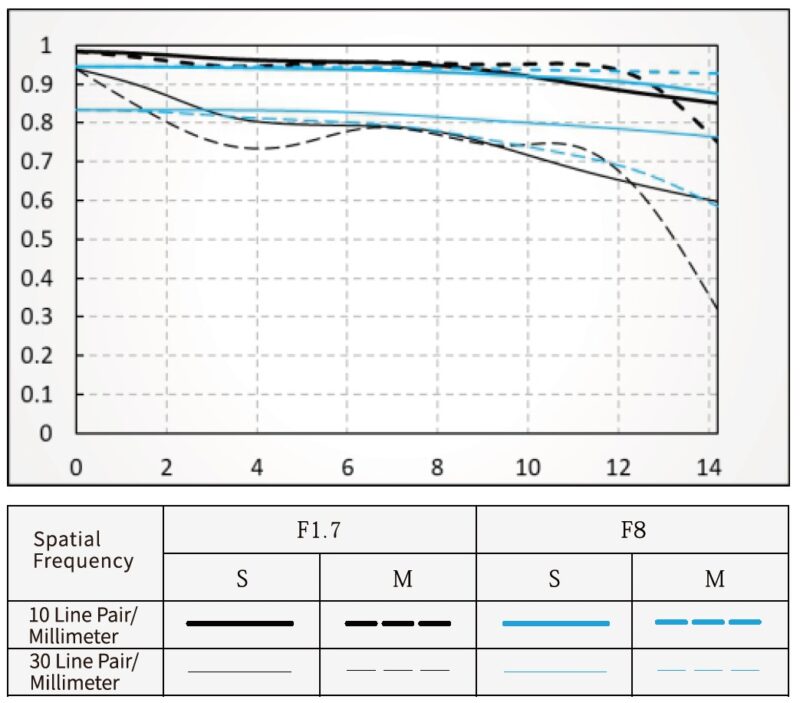
Sharpness (Infinity)
For the infinity sharpness test, we look at three areas of the image, centre, mid-frame, and corner, see highlighted areas in the image below!
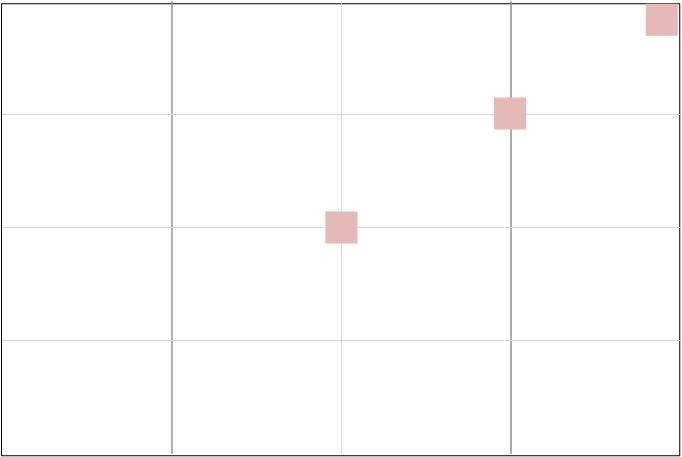
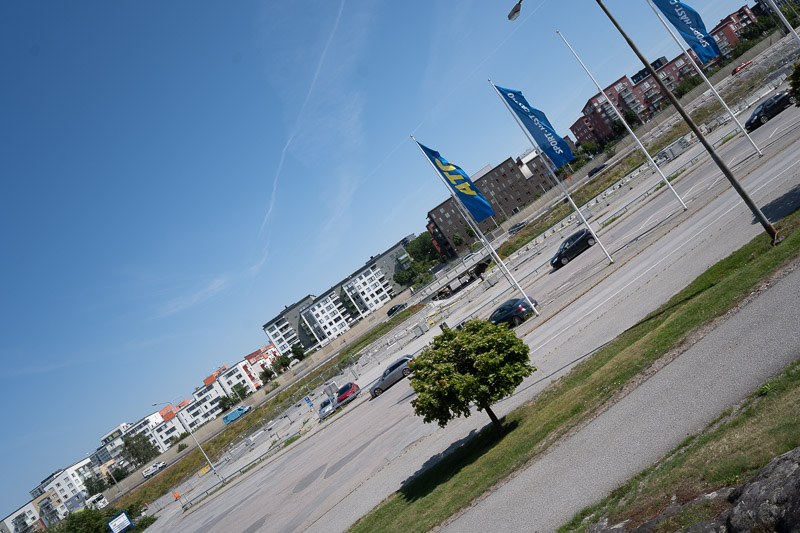
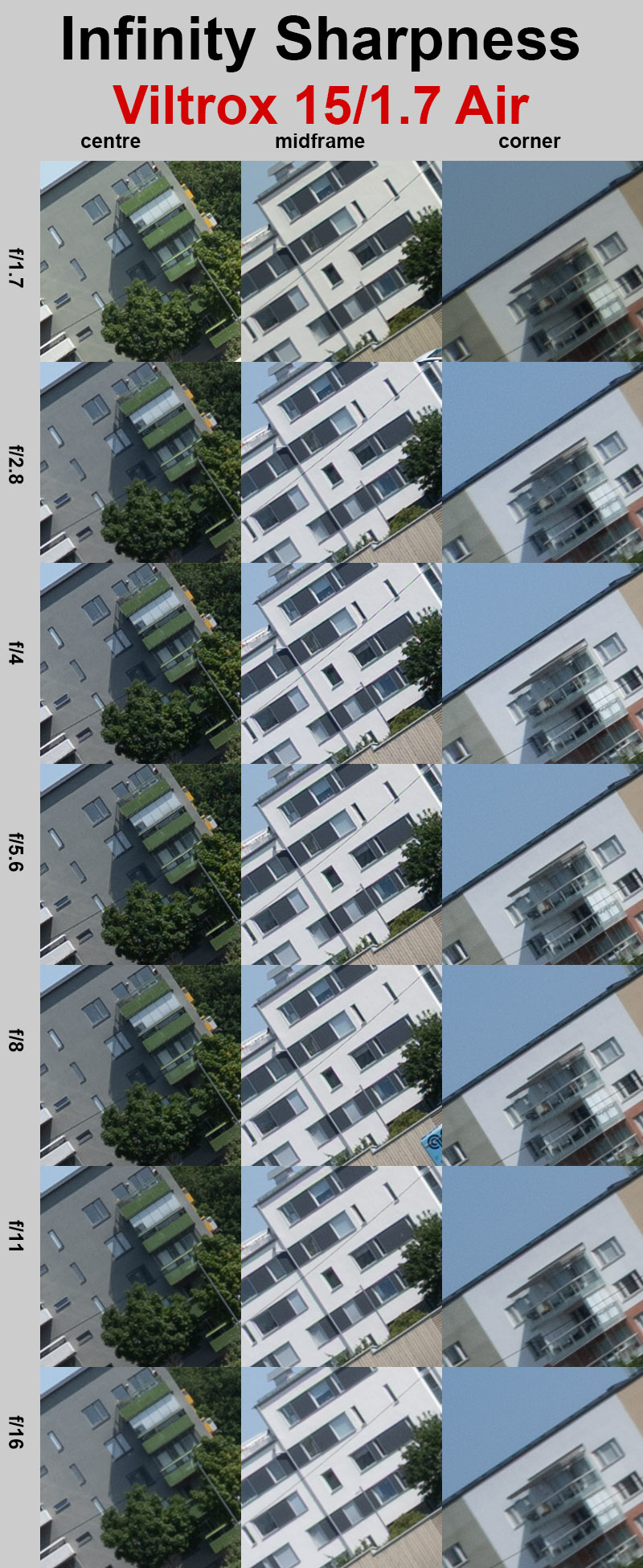
Sharpness is excellent in the center right from f/1.7, with very good performance in the midframe and corners. The midframe reaches excellent levels just one stop down at f/2.8, and the corners catch up by f/5.6 — though still not quite as sharp as the rest of the frame. From f/11 onward, diffraction starts to have an impact, particularly in the corners, where it becomes more noticeable at f/16.
Sharpness (Portrait)
Let’s look at the points of interest for portraits at the portrait distance: the very centre, the centre’s inner periphery (1/3 rule intersection), and the centre’s outer periphery (1/4th intersection).
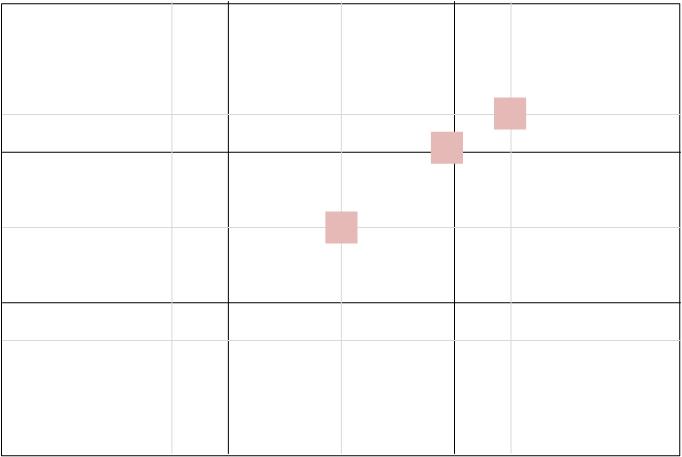
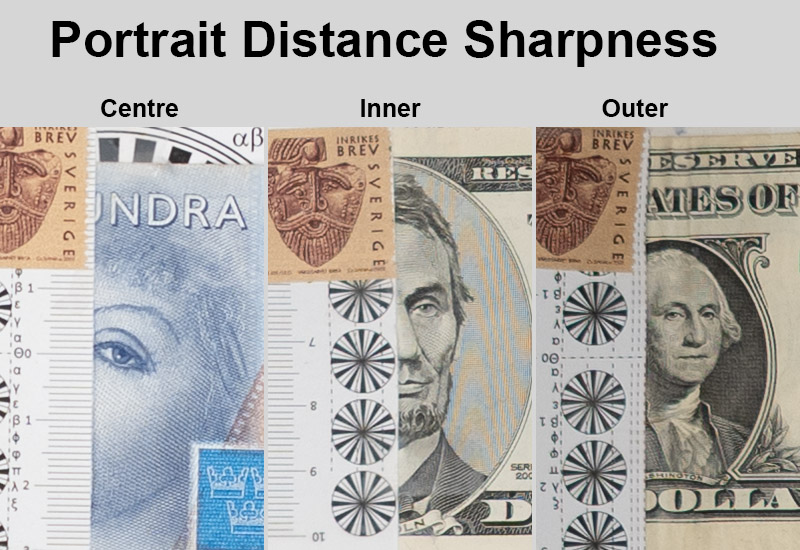
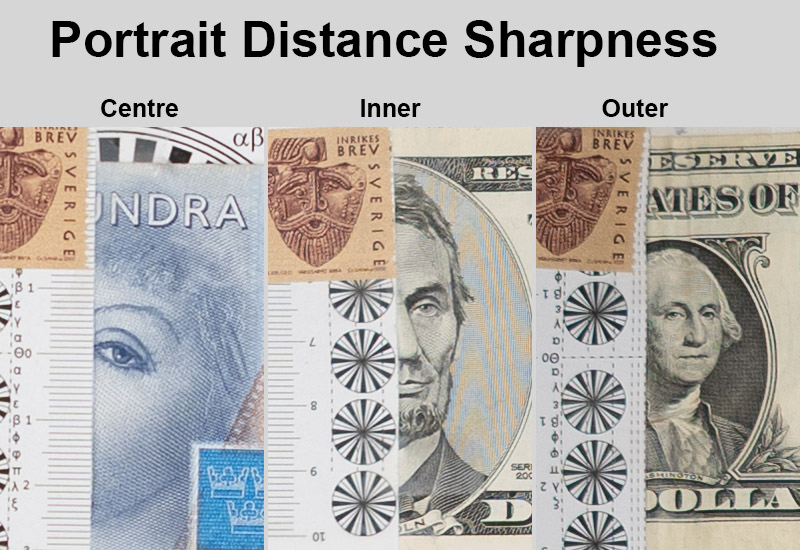
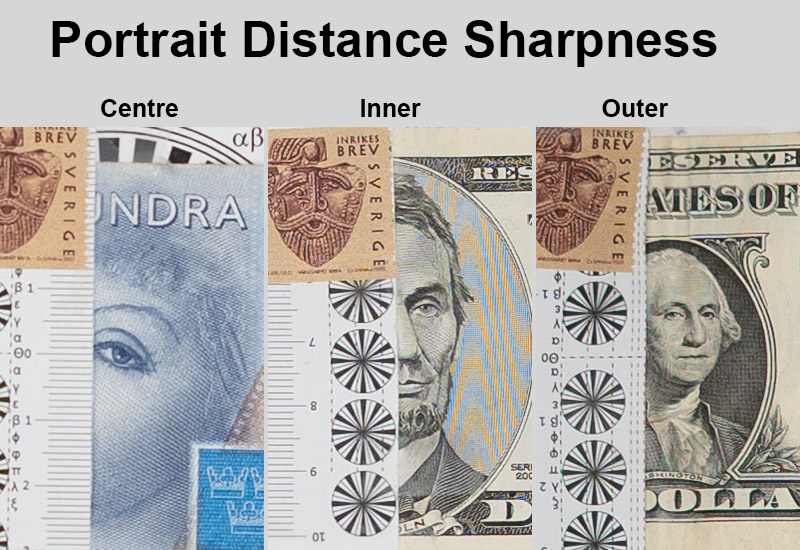
Sharpness is excellent at portrait distances across all measured points. The lens can actually resolve more detail than the camera’s 22MP sensor is capable of capturing in this area.
.
Sharpness (Close-up)


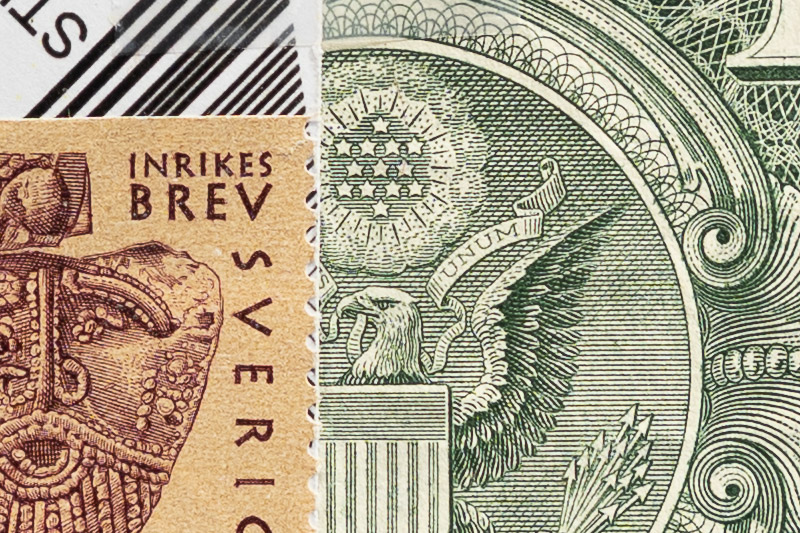

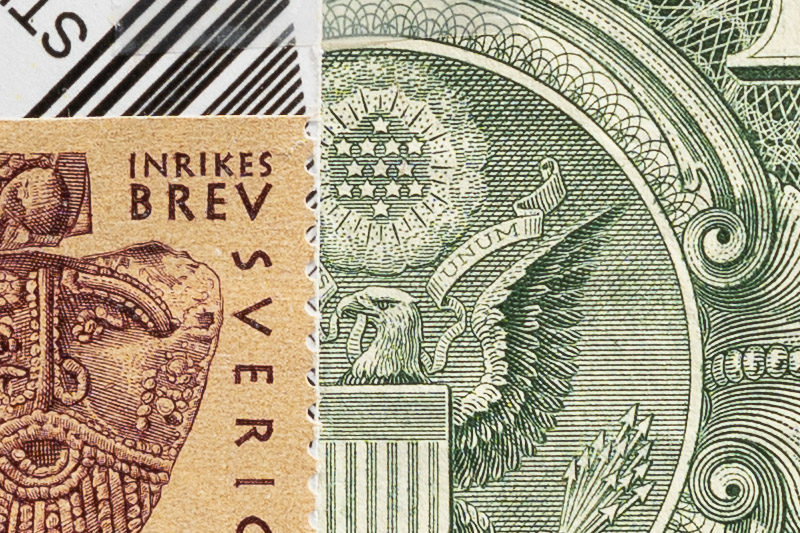
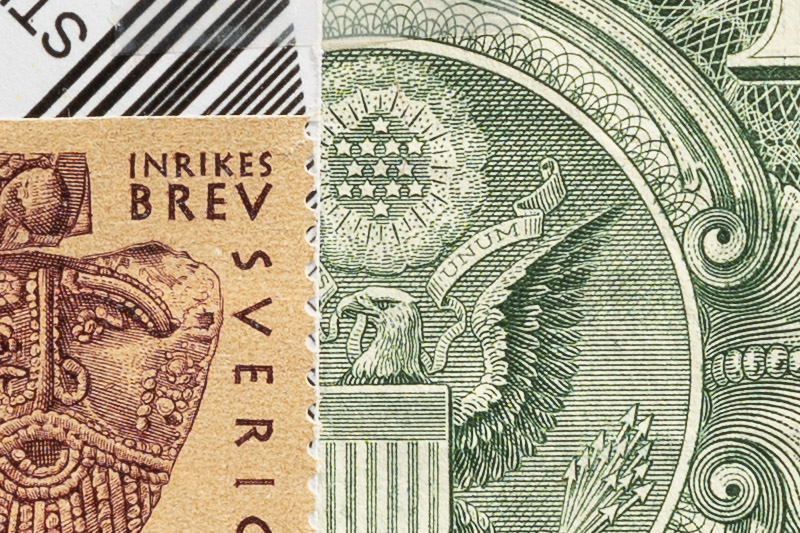
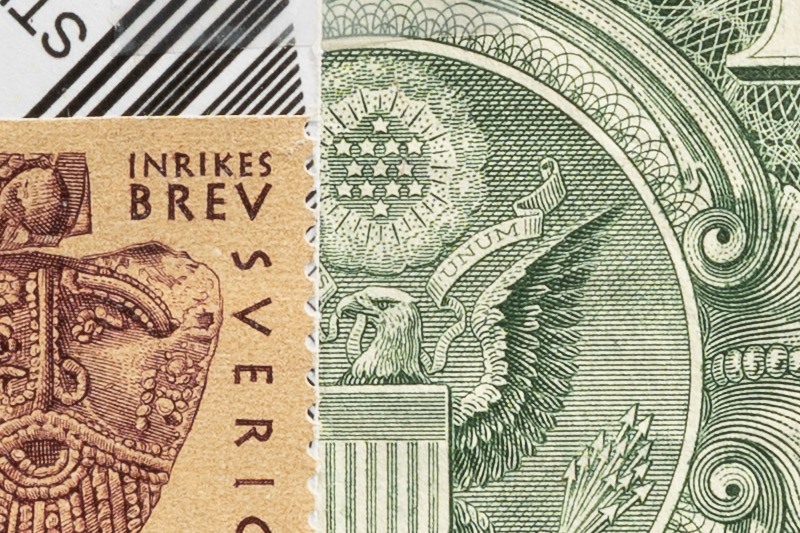

Close-up sharpness is only good wide open, which is a noticeable difference compared to other distances. It improves significantly by stopping down just one-third of a stop to f/2, and becomes excellent at f/2.8. Sharpness remains excellent up to f/11, where diffraction starts to slightly reduce image quality — and even more so at f/16 — though it still remains very good.
Lens Distortion
The images from this 15mm 1.7 air have a small but difficult-to-correct wavy distortion, so it might not be the ideal tool for architecture photography.

Vignetting
The lens shows fairly strong vignetting, which improves when stopping down but never drops to a negligible level. Even at f/8, the vignetting remains visible in scenes with uniform lighting.
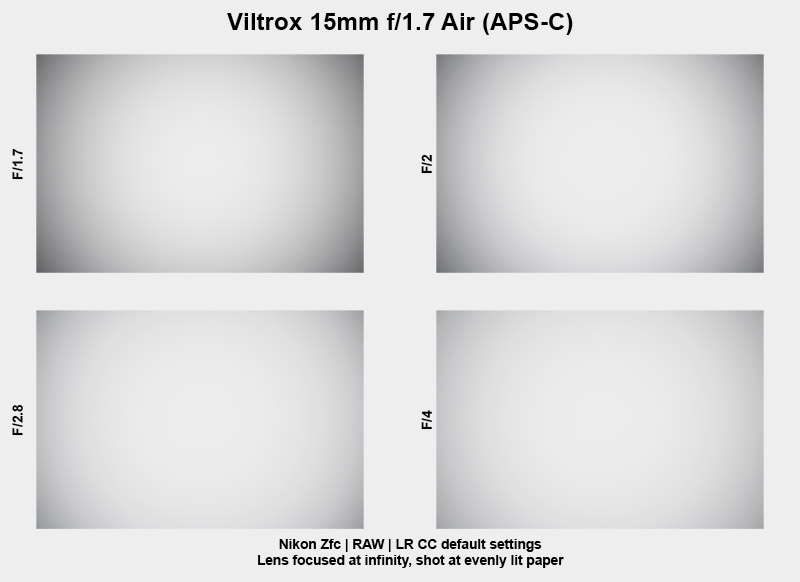
- F/1.8: 2.7 EV
- F/2.8: 2.3 EV
- F/4.0: 1.7 EV
- F/5.6: 1.6 EV
- F/8.0: 1.5 EV
Focus Shift & Aberrations
There is some focus shift, which actually does not have an impact in the case of this lens as it autofocuses with stopped down aperture.

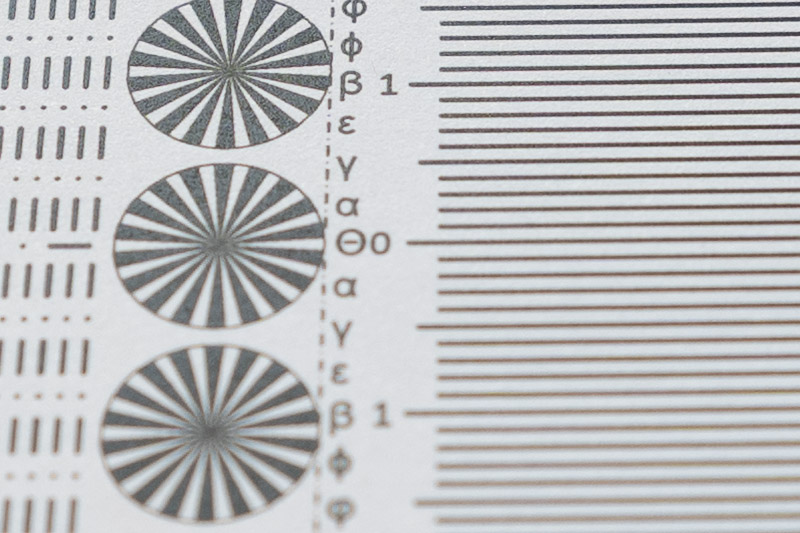

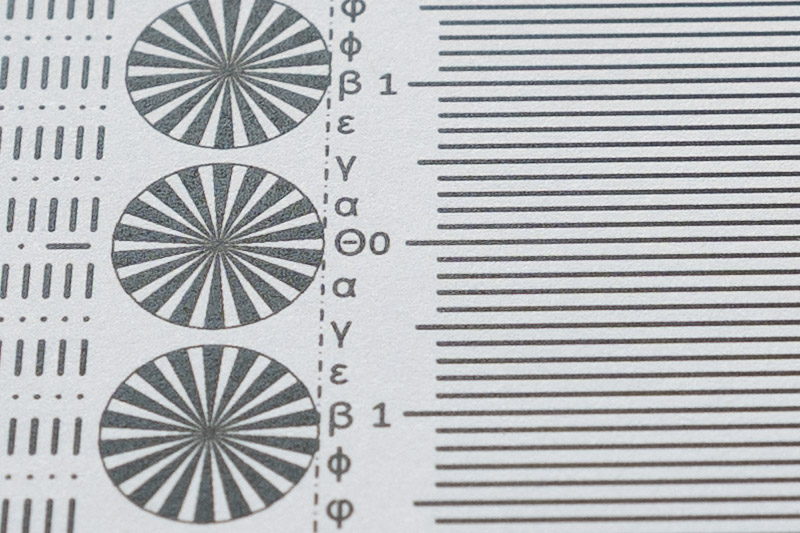
There is a small amount of longitudinal chromatic aberration, which disappears by f/4.
Lateral chromatic aberration is also present, but it’s so minimal that it can be ignored in almost all situations.
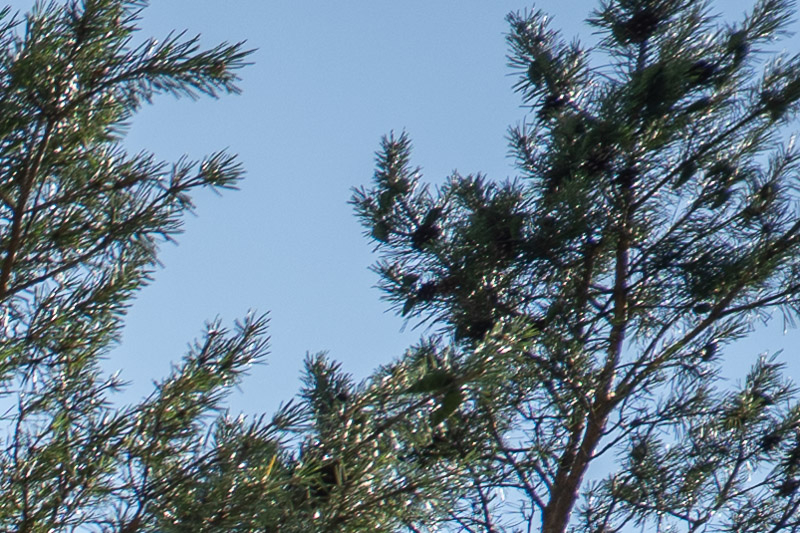

Flare Resistance
I didn’t have high expectations for this feature on a Chinese lens, given their historical performance, but I was pleasantly surprised. It’s not quite top-tier, but it comes close. Generally, it handles flares well at wider apertures, though some ghosting and flare artifacts appear at smaller apertures. It’s not a dealbreaker, but it can be distracting in certain scenes.
Coma
The 15mm f/1.7 Air shows some coma in the corners of the image. While it’s not severe, you’ll need to stop down to f/5.6 to eliminate it completely.
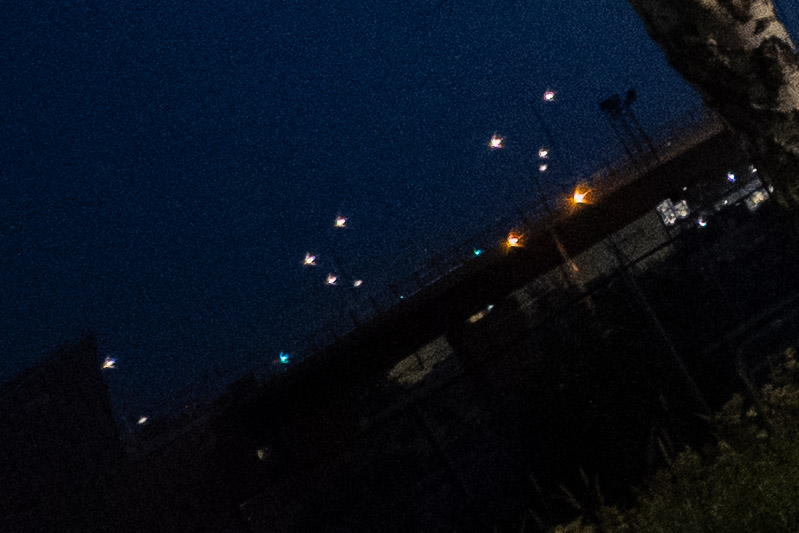

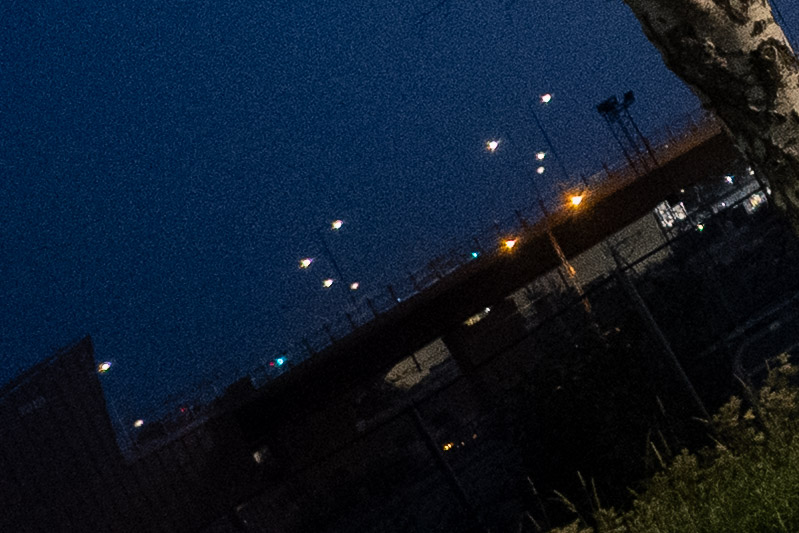
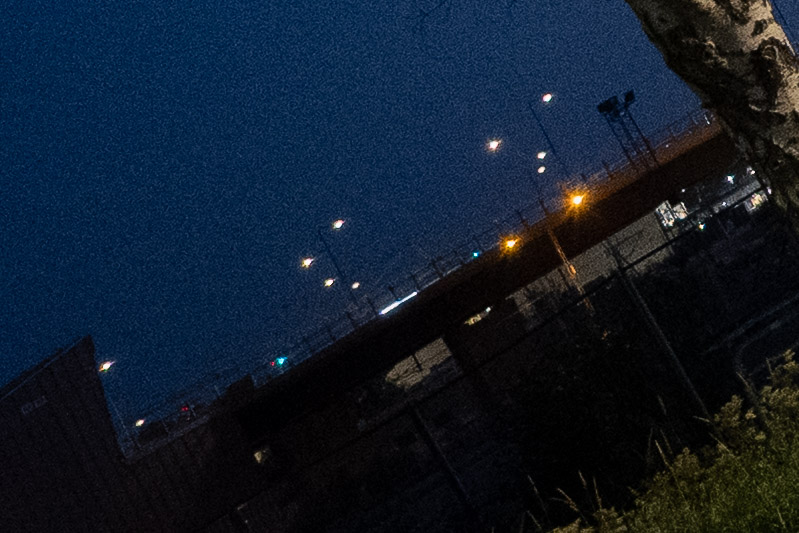

Sunstars
Sunstars aren’t a strength of this lens; even at its smallest aperture, they stay pretty fuzzy and undefined.
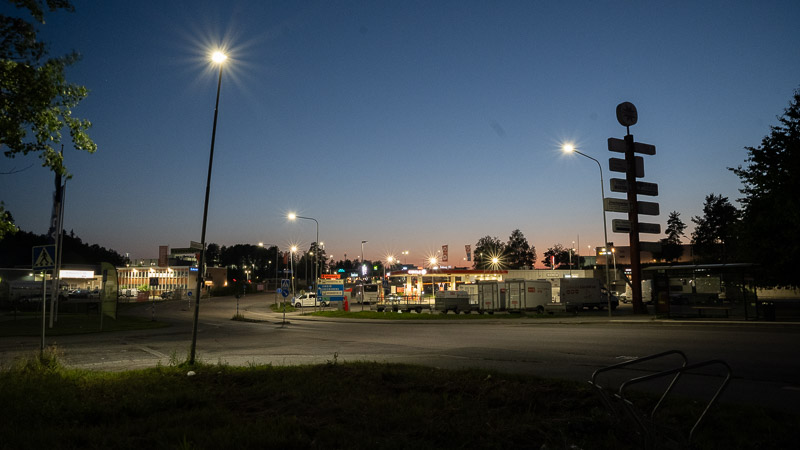

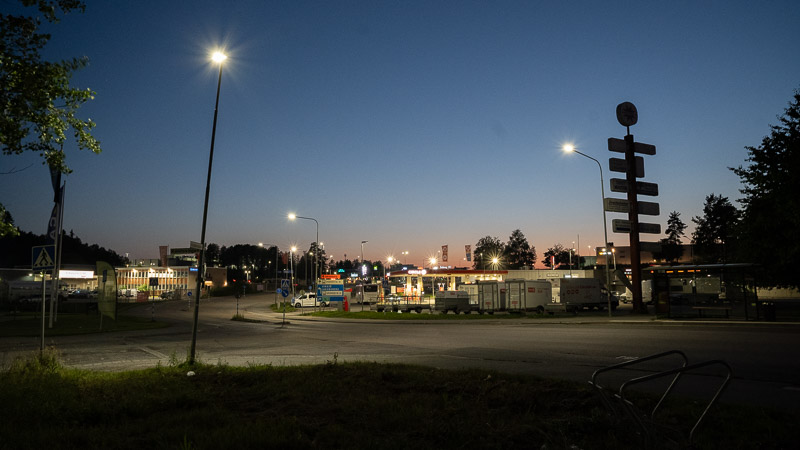
Focus Breathing
There is a very small amount of focus breathing, but in most cases it will not be noticed and can be ignored.
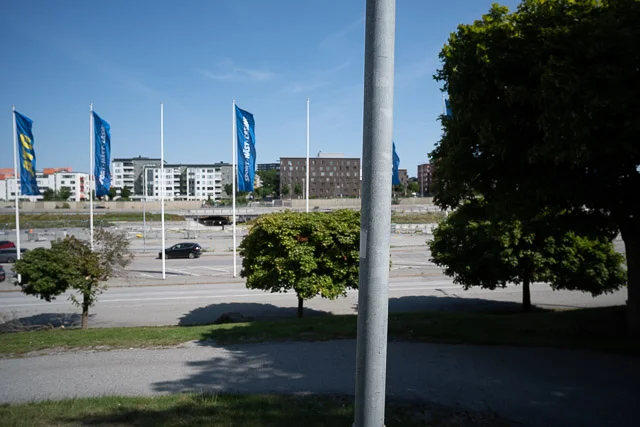
Bokeh
As a 15mm wide-angle lens, this isn’t something you’d buy for its bokeh. That’s why I don’t go into much detail about it — but if you get close to your subject, you can actually get some background blur, and it doesn’t look bad at all.

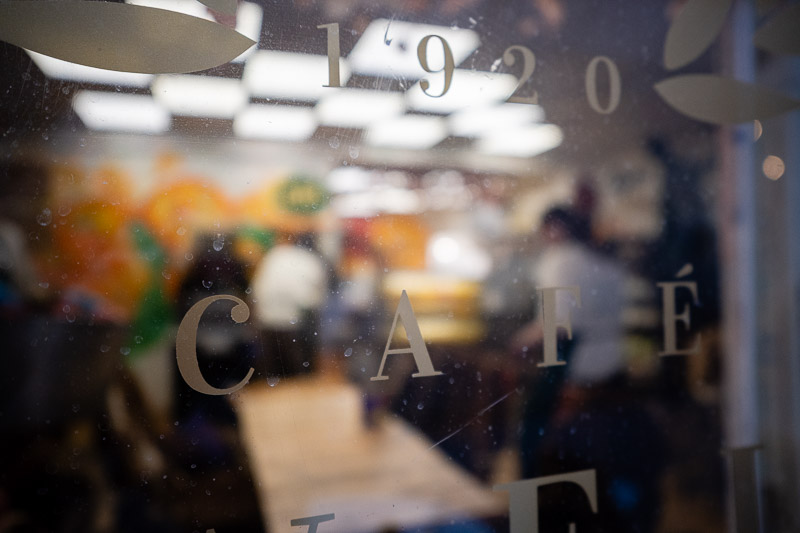


Even at medium distances, the bokeh looks pleasant and of good quality — though there’s not a lot of it.
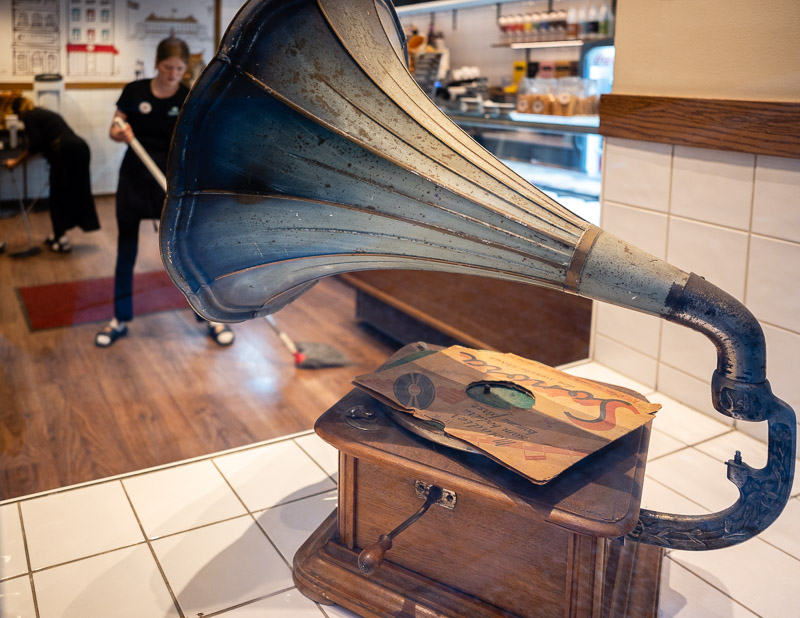


Conclusion
| I LIKE | AVERAGE | I DON’T LIKE |
| Sharpness Bokeh Focus breathing Price Build and Handling |
Closeup sharpness wide open Lens distortion Focus shift Chromatic aberrations Flare resistance Coma |
Vignetting Sunstars |
This is a sharp lens — maybe not quite as sharp as some of its siblings, but still impressive. Build quality and handling are on par with other good modern lenses. Not everything is top-tier, but nothing feels lacking either. The main areas for improvement are vignetting and sunstars. Still, it shines as a compact street and landscape photography lens, where those two flaws aren’t really important. This is mostly because stopped down, it’s great for landscape work as it will be super sharp and vignetting minimised — all in a small, lightweight package. The moderate, budget-friendly price is a nice bonus.
Writing articles like this one is both time-consuming and costs us a lot of money. If you found this article helpful and decided to buy one of these lenses, please consider using one of the affiliate links.
If you are not interested in buying any of the lenses, but you still found this article useful, interesting, or it saved you a lot of money, treat us to a coffee (donate)!
| Buy new: VILTROX Store, Pergear store, Amazon (anywhere) for $227-$239 (Affiliate links) * Only Viltrox store link includes the discount, but check all links for the best price! |
Alternatives
There are actually not many wide-angle prime lenses for Nikon APS-C cameras. The only ones I am aware of and are close in focal length to this Viltrox lens are:
Sigma 16mm f/1.4 DC DN Contemporary (Nikon Z mount):
From the popular DC DN series primarily for Sony E and L-mount, but also released for Nikon Z, approximately 24mm full-frame equivalent with autofocus, and about 1/2 stop faster.
Buy new: Amazon (anywhere) for $570 (Affiliate links)
SIRUI Sniper 16mm f/1.2
Another AF lens, but a full stop faster than the reviewed Viltrox.
Buy new: Amazon (anywhere) $319 (Affiliate link)
TTArtisan 17mm f/1.4 Z (APS-C):
A manual focus wide-angle lens with a fast aperture (about 1/2 faster). It is almost in the same focal length.
Buy new: TTArtisan Store, Amazon (anywhere) for $139 (Affiliate links)
Viltrox AF 13mm f/1.4 Z:
This popular autofocus option provides an ultra-wide field of view (approximately 19.5mm full-frame equivalent) with a fast f/1.4 aperture. Now the focal length difference is on the border of not being comparable, but as there are not many others, we list this one too.
Buy new: Viltrox Store, Amazon (anywhere) for $486 (Affiliate links)
More Sample Images
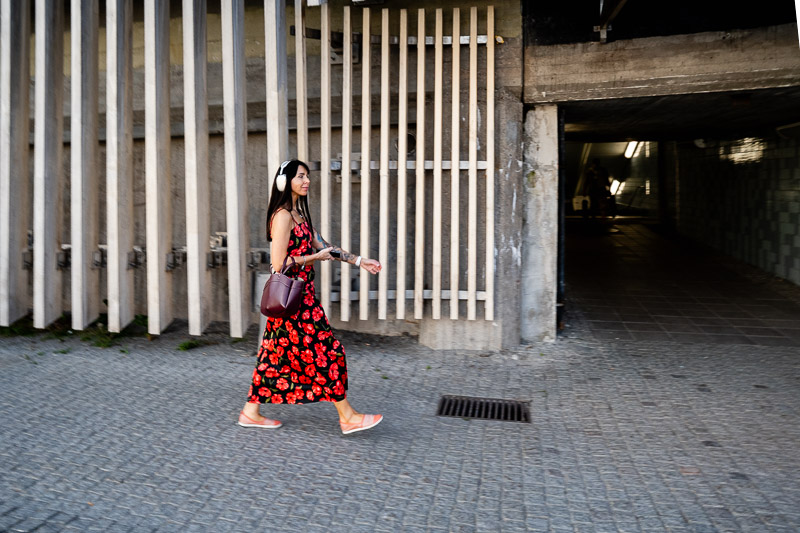










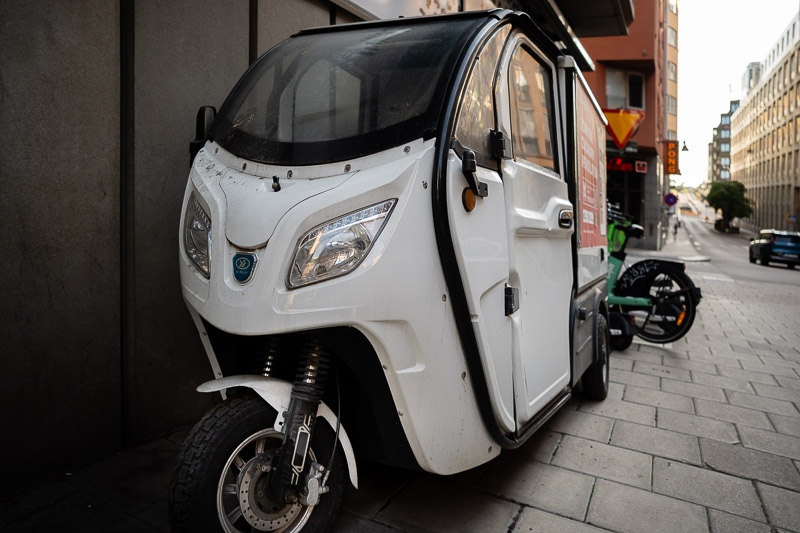
Most of the sample images in this review and many more can be found in higher resolution here.
Further Reading
What camera gear and accessories do I use most frequently?
Support Us
Did you find this article useful or did you just like reading it? It took us a lot of time and money to prepare it for you. Use the Donate button to show your appreciation!
![]()

(Donations via Paypal or bank card)
What’s in my camera bag? MY 2024 KIT!!
- Main camera : https://amzn.to/3TsGtKg
- Camera grip : https://amzn.to/4e0G3CR
- Memory Card 1: https://amzn.to/47pA20i
- Memory Card 2 : https://amzn.to/3XHYxlZ
- Camera 2 : https://amzn.to/3Xifou8
- Camera grip: https://amzn.to/4dYYpV9
- Memory card 1: https://amzn.to/4e5h2H0
- Memory card 2: https://amzn.to/3zu7W7n
- Small travel tripod: https://amzn.to/4goIX68
- Mini tripod: https://amzn.to/4e09XXX
- Small shoulder bag: https://amzn.to/47tPMiY
- Medium shoulder bag: https://amzn.to/4ej4bjY
This site contains affiliate links, for which I may receive a small commission if you purchase via the links at no additional cost to you. This helps support the creation of future content.
Martin
Latest posts by Martin (see all)
- Analogue Photography: Part 4 – Ilford HP5 Plus at a Historical Engine Factory - December 3, 2025
- REVIEW: 7Artisans AF 10mm f/2.8 (APS-C) - November 30, 2025
- REVIEW: 7Artisans AF 35mm f/1.8 - October 15, 2025


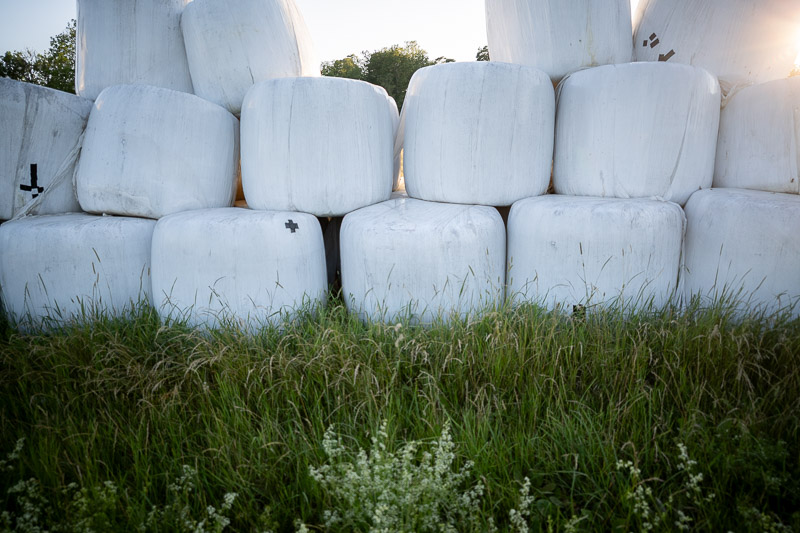

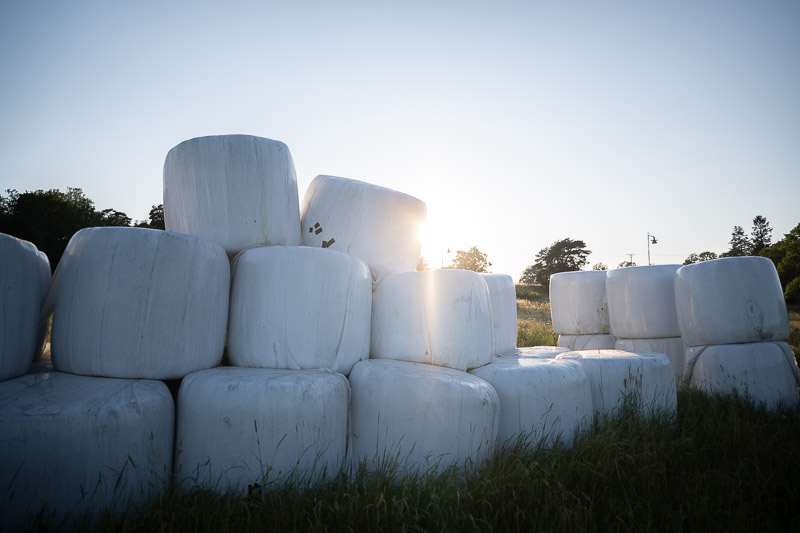

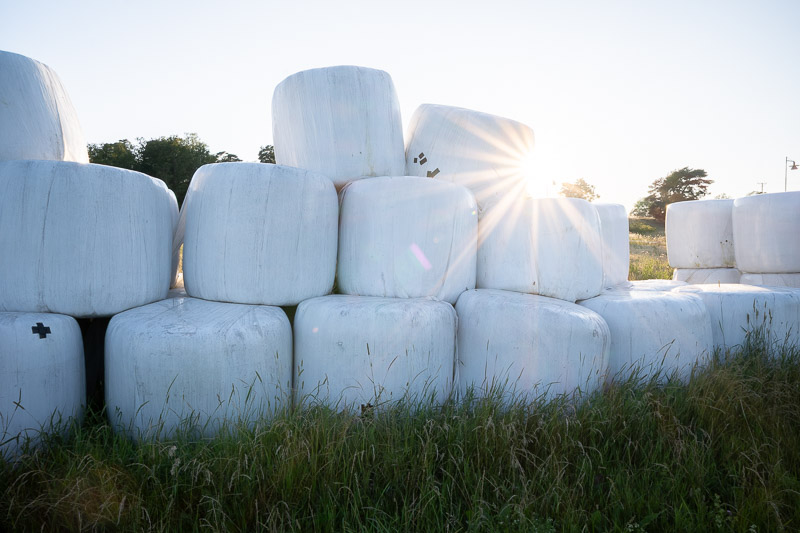


Thanks for the detailed review! Useful to have more opinions on this new lens. I noticed a very minor mistake that I only mention because it appears in a couple places… but f1.7 is a half stop slower than f1.4, and (naturally) a half stop faster than f2. Obviously, not that far off from a third (or two thirds), but different nonetheless.
Thanks Mike,
You’re absolutely right in theory. However, by convention, what I’m saying is the closest practical demonstration, given how lenses and cameras represent light transmission steps.
To be exact, half a stop slower than f/1.4 is f/1.66, and 2/3 of a stop slower is f/1.76, so f1.7 is not exactly any of them.
As you mentioned, f/1.66 is indeed closer to f/1.7 than f/1.76 is. But since modern cameras typically display f-stops in 1/3-stop increments, I chose to say almost 2/3 of a stop—emphasizing that it’s an approximation.
That’s pretty performance, esp regarding the price!
I also realized I recognized the houses in the infinity tests, I lived ~500 m from the spot the pictures were taken from 😀
Lucky that you moved, otherwise, I would have come for a coffee, while I was there 😉
would have been unthinkable to have such fast wide angle lens for apsc camera. and the rendering is pretty nice. by the way, where were these taken? looks like a cool place for street photographers.
Yeah, I wish there were lenses like this when I was still shooting APS-C cameras…
Pictures were taken in Stockholm, Sweden.
Here is a link to another article with loads of street photography picture from the same places:
https://phillipreeve.net/blog/review-ttartisan-27mm-f-2-8-the-ultra-portable-lens-for-great-street-photography-aps-c/
Thanks Martin. looks like I need to book a city trip up the north to take some photos. the lighting from the summer shots is very pleasant.